
Kato Paphos: The Jewel of Cyprus
Discover Kato Paphos, where ancient history meets modern charm, and enjoy a vibrant waterfront, stunning natural landscapes, and a warm Mediterranean climate.
Kato Paphos, nestled on the southwest coast of Cyprus, is a blend of ancient history and modern charm. The city boasts a rich tapestry of archaeological treasures, from the awe-inspiring mosaics in the Paphos Archaeological Park to the grand Tombs of the Kings. These relics tell stories of a time when Paphos was a vital hub in the Mediterranean world. Beyond its historical allure, Kato Paphos offers a vibrant waterfront lined with cafes, restaurants, and shops. The picturesque harbor, with its iconic castle, is perfect for leisurely strolls. Here, you can enjoy the serene beauty of the Mediterranean Sea, watch the boats bobbing in the water, and savor fresh seafood at one of the many waterfront eateries. For those seeking a bit of adventure, the city is a gateway to some of Cyprus's most stunning natural landscapes. The nearby Akamas Peninsula is a haven for hikers and nature lovers, while the crystal-clear waters of Coral Bay are ideal for swimming and snorkeling. With its sunny climate, friendly locals, and an array of activities, Kato Paphos promises an unforgettable experience for every traveler.
Local tips in Kato Paphos
- Visit the Paphos Archaeological Park early in the morning to avoid the crowds and the midday heat.
- Wear comfortable shoes as the cobbled streets and archaeological sites require a bit of walking.
- Try the local cuisine, especially the fresh seafood, at the harbor restaurants for an authentic taste of Cyprus.
- Rent a car if you plan to explore beyond the city, as public transport options can be limited.
- Don't miss the sunset at Paphos Castle; it's a perfect spot for stunning photos.
Kato Paphos: The Jewel of Cyprus
Kato Paphos, nestled on the southwest coast of Cyprus, is a blend of ancient history and modern charm. The city boasts a rich tapestry of archaeological treasures, from the awe-inspiring mosaics in the Paphos Archaeological Park to the grand Tombs of the Kings. These relics tell stories of a time when Paphos was a vital hub in the Mediterranean world. Beyond its historical allure, Kato Paphos offers a vibrant waterfront lined with cafes, restaurants, and shops. The picturesque harbor, with its iconic castle, is perfect for leisurely strolls. Here, you can enjoy the serene beauty of the Mediterranean Sea, watch the boats bobbing in the water, and savor fresh seafood at one of the many waterfront eateries. For those seeking a bit of adventure, the city is a gateway to some of Cyprus's most stunning natural landscapes. The nearby Akamas Peninsula is a haven for hikers and nature lovers, while the crystal-clear waters of Coral Bay are ideal for swimming and snorkeling. With its sunny climate, friendly locals, and an array of activities, Kato Paphos promises an unforgettable experience for every traveler.
When is the best time to go to Kato Paphos?
Iconic landmarks you can’t miss
Archaeological Site of Nea Paphos
Discover the rich history and stunning mosaics of Nea Paphos, a UNESCO World Heritage Site that reveals the ancient wonders of Cyprus.
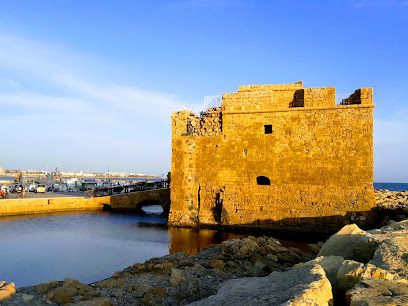
Archaeological Site of the Tombs of the Kings
Discover the awe-inspiring Tombs of the Kings in Cyprus, a UNESCO World Heritage site filled with ancient history and breathtaking architecture.
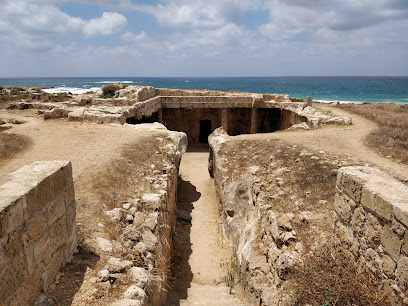
Paphos Castle
Explore the enchanting Paphos Castle, a historical landmark in Cyprus offering stunning sea views and a glimpse into the island's rich heritage.
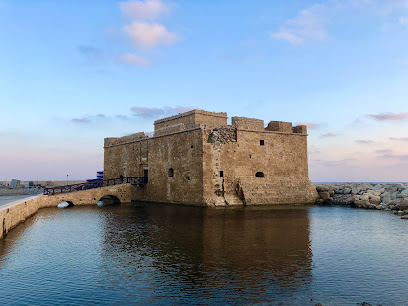
Paphos Mosaics
Discover the captivating Paphos Mosaics in Cyprus, a UNESCO World Heritage site showcasing exquisite ancient Roman artistry and rich historical significance.
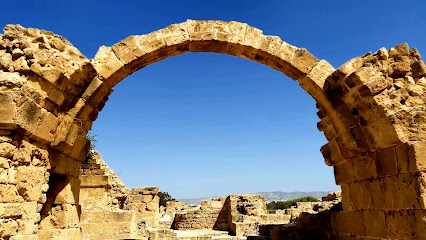
House of Dionysus
Discover the ancient artistry and rich history of the House of Dionysus, Cyprus's premier archaeological site with breathtaking mosaics and Roman architecture.
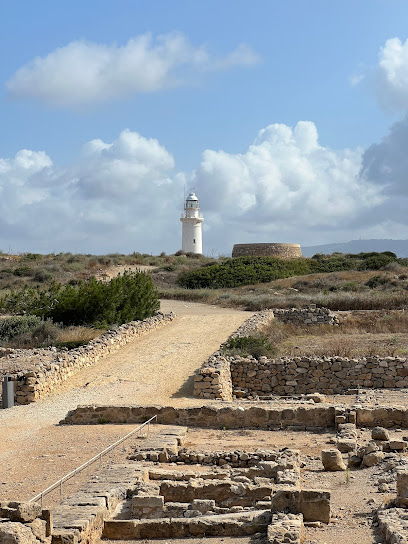
Agia Solomoni Catacomb
Discover Agia Solomoni Catacomb, a historical shrine in Paphos, Cyprus, where ancient artistry and spirituality intertwine in a captivating underground setting.
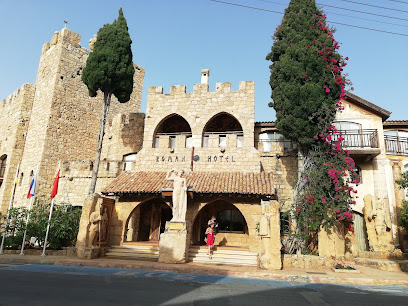
Lighthouse
Explore the historical Lighthouse of Paphos, a stunning landmark offering breathtaking coastal views and a glimpse into Cyprus's maritime heritage.
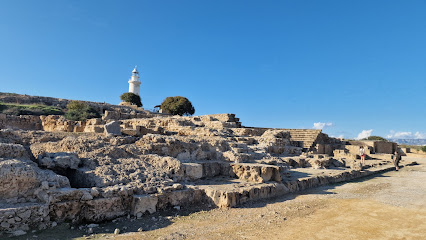
St Paul's Church and archeological site
Experience the rich history and serene beauty of St Paul's Church and archaeological site in Paphos, a true gem of Cyprus.
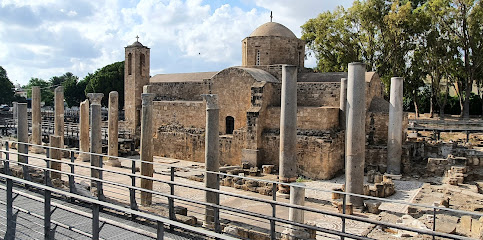
Catacombs
Unearth the history and mystery of the Catacombs in Paphos, Cyprus—a captivating journey into ancient burial sites and early Christian heritage.
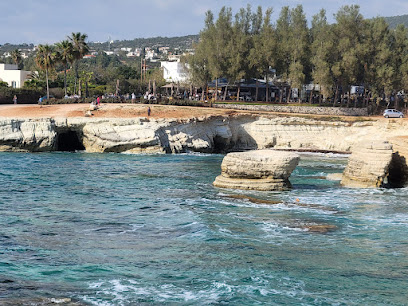
Paphos Promenade
Explore the scenic Paphos Promenade: a vibrant waterfront destination in Cyprus brimming with dining, shopping, and historical attractions.
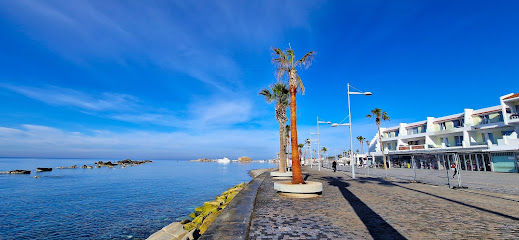
Roman Odeon
Explore the Roman Odeon in Paphos, Cyprus – a stunning ancient amphitheater showcasing rich history and remarkable architecture.
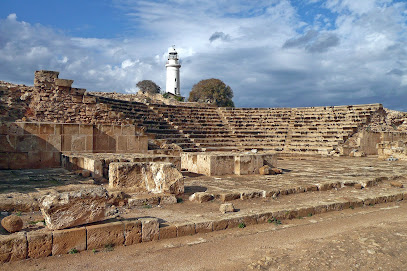
Church of Panagia Theoskepasti
Explore the Church of Panagia Theoskepasti in Paphos, a serene Greek Orthodox church rich in history and stunning architecture, perfect for spiritual reflection.
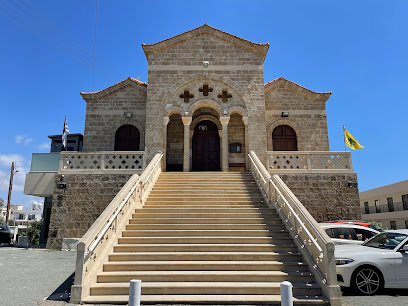
Kato Paphos - Ta Mpania
Explore Kato Paphos - Ta Mpania in Cyprus for stunning views, rich history, and vibrant local culture, perfect for all types of travelers.
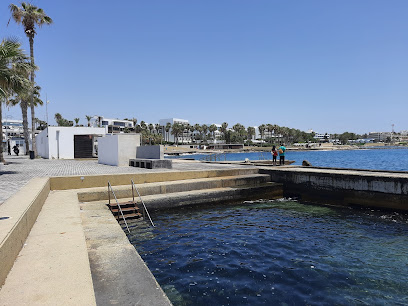
Kato Pafos Archaeological Park
Explore Kato Pafos Archaeological Park, a UNESCO World Heritage site, with breathtaking mosaics and ancient ruins in the heart of Paphos, Cyprus.
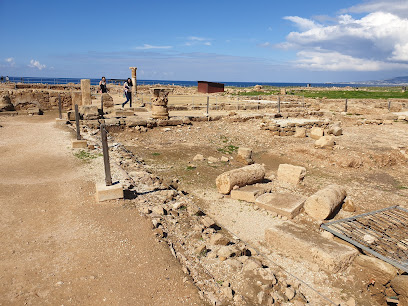
Forty Columns Fortress
Explore the rich history and stunning architecture of the Forty Columns Fortress in Paphos, a must-visit historical landmark in Cyprus.
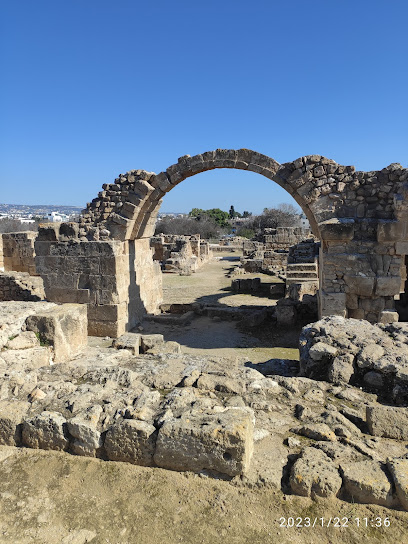
Unmissable attractions to see
Petra tou Romiou (Aphrodite's Rock)
Discover the enchanting Aphrodite's Rock in Cyprus, a historical landmark where legend, beauty, and romance collide in a breathtaking coastal setting.
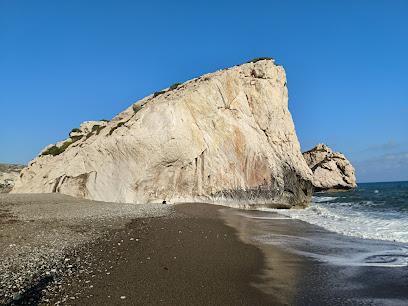
Archaeological Site of the Tombs of the Kings
Discover the Tombs of the Kings, an archaeological gem in Cyprus, where history and ancient architecture come alive amidst stunning coastal views.
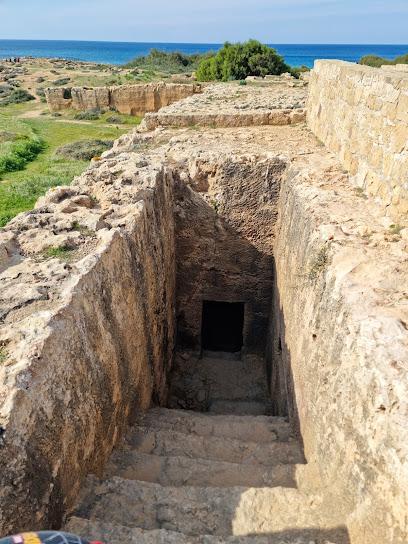
Kykkos Monastery
Discover the breathtaking Kykkos Monastery, a cultural gem of Cyprus nestled in the Troodos Mountains, where spirituality meets stunning landscapes.
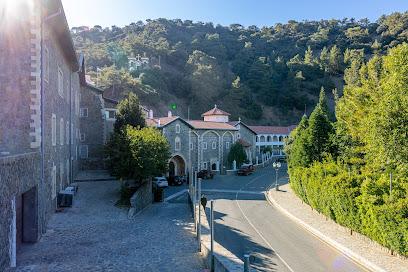
The Edro III Shipwreck
Explore the Edro III Shipwreck in Peyia, Cyprus—a captivating blend of history and stunning coastal scenery perfect for adventurous travelers.

Pafos Zoo
Explore Pafos Zoo in Cyprus, where adventure meets education amidst a stunning array of wildlife and natural beauty.

Paphos Aphrodite Waterpark
Discover a world of aquatic adventure at Paphos Aphrodite Waterpark, a premier water park in Cyprus with attractions for every age.
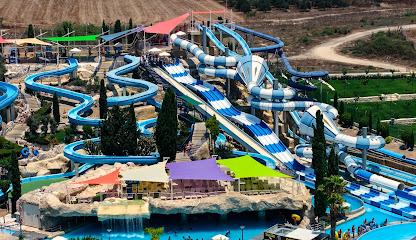
Paphos Castle
Experience the rich history and stunning views at Paphos Castle, a must-visit landmark on the beautiful coast of Cyprus.

Adonis Baths Waterfalls
Experience the magical beauty of Adonis Baths Waterfalls in Cyprus, where nature and mythology intertwine for a perfect escape.
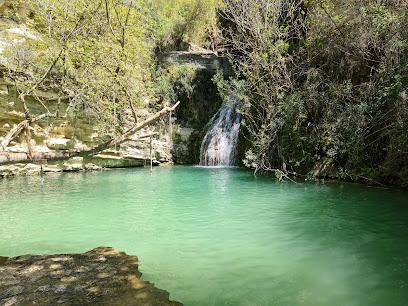
Avakas Gorge Nature Trail
Explore the breathtaking Avakas Gorge Nature Trail in Cyprus, a perfect blend of adventure and natural beauty amidst stunning geological formations.
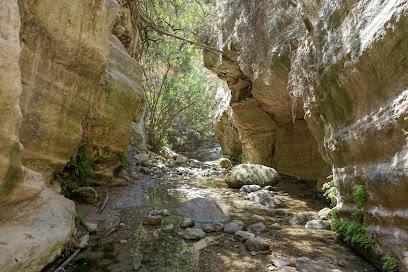
Kolossi Castle
Explore Kolossi Castle, a historical landmark in Cyprus, and immerse yourself in the island's rich medieval heritage and stunning landscapes.
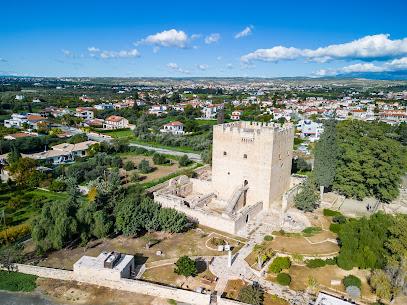
Baths of Aphrodite
Explore the mythical Baths of Aphrodite in Cyprus, a historical landmark where beauty meets nature, rich in legend and stunning scenery.
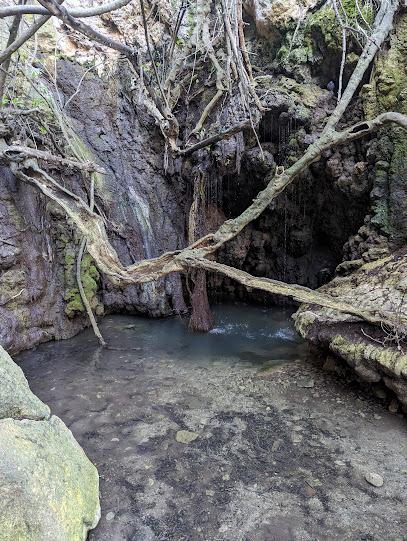
Timios Stavros Monastery
Experience the serene beauty and rich history of Timios Stavros Monastery, a captivating spiritual site in the heart of Omodos, Cyprus.

Kalidonia Waterfall
Explore the stunning Kalidonia Waterfall in Pano Platres, Cyprus, a natural wonder perfect for nature lovers and adventure seekers alike.
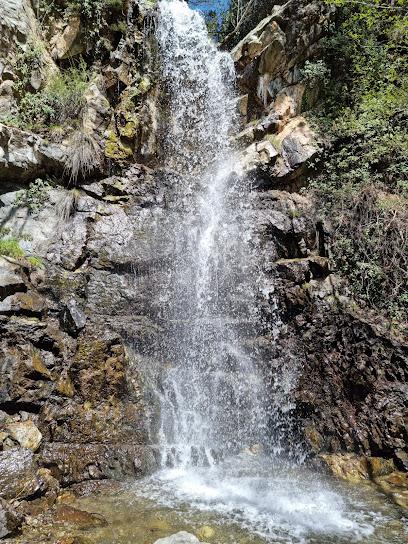
Lara Beach
Discover the pristine beauty of Lara Beach in Cyprus—an unspoiled paradise perfect for relaxation and adventure amidst stunning natural landscapes.

Akama National Forest Park
Experience the breathtaking landscapes and vibrant biodiversity of Akama National Forest Park, Cyprus' premier nature preserve and adventure destination.
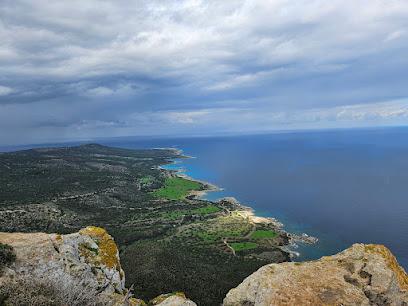
Essential places to dine
The Harbour
Experience exquisite dining at The Harbour in Paphos, where local flavors meet stunning Mediterranean views for an unforgettable meal.
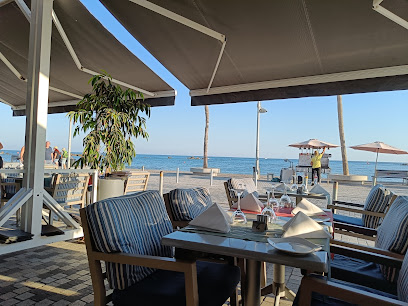
Hondros - The oldest traditional tavern
Discover authentic Greek flavors at Hondros - the oldest traditional tavern in Paphos, where every dish tells a story.
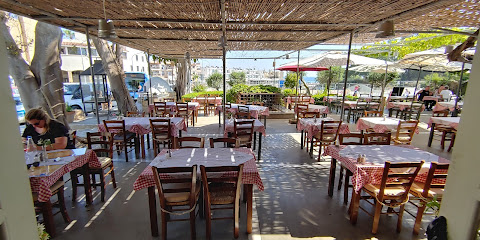
Τα Μπάνια
Discover the vibrant atmosphere and delicious Mediterranean cuisine at Τα Μπάνια in Paphos – where every meal is a celebration.
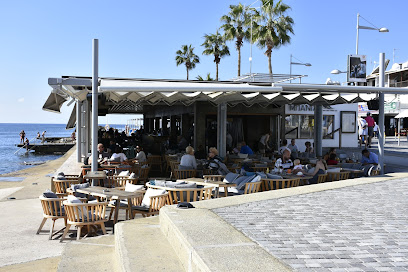
The Moorings Cafe restaurant
Discover delicious Mediterranean cuisine and stunning seaside views at The Moorings Cafe in Paphos - a must-visit destination for food lovers.
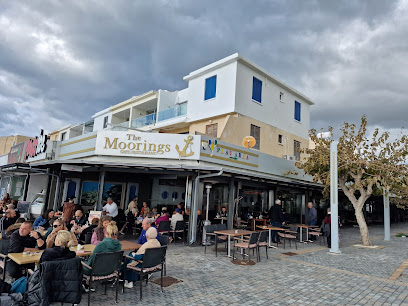
Demokritos
Discover the flavors of Cyprus at Demokritos in Paphos - where tradition meets taste in a vibrant dining experience.

Viva Cyprus Restaurant
Discover the essence of Cyprus at Viva Cyprus Restaurant – where traditional flavors meet warm hospitality in Paphos.
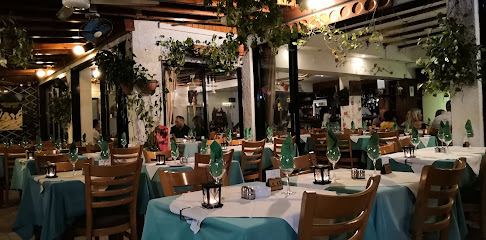
The Windmill
Experience authentic Cypriot cuisine at The Windmill - where every meal is a celebration of local flavors and warm hospitality.
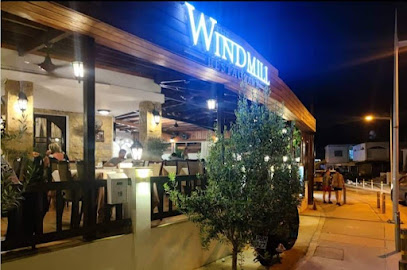
The Lodge
Savor authentic South African cuisine at The Lodge in Paphos – where seafood meets steakhouse excellence.
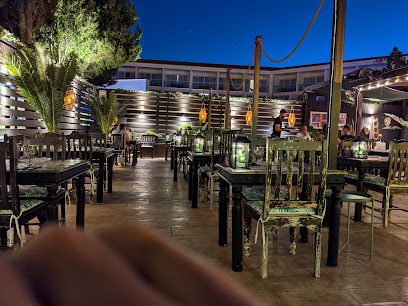
Chloe's Chinese Restaurant
Discover authentic Chinese flavors at Chloe's Chinese Restaurant in Paphos - where culinary tradition meets modern dining.

Curry House Indian Tandoori Restaurant
Experience authentic Indian flavors at Curry House in Kato Paphos - where every dish tells a story.
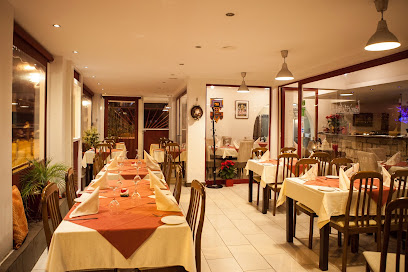
Phivos Restaurant
Discover Mediterranean flavors at Phivos Restaurant in Paphos – where culinary excellence meets breathtaking coastal views.
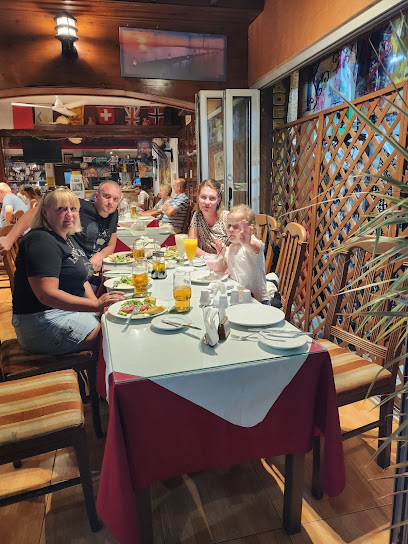
Captain's Bistro
Experience authentic Cypriot cuisine with stunning Mediterranean views at Captain's Bistro in Paphos.
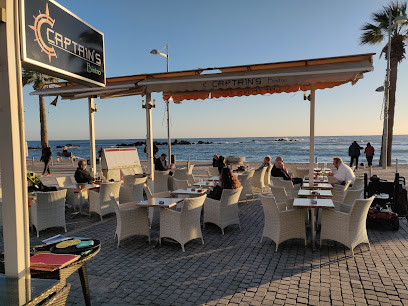
Minas tavern
Discover Minas Tavern in Paphos for an authentic taste of Cyprus with traditional dishes served in a warm and inviting atmosphere.
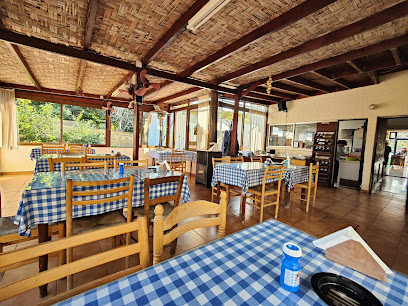
Jayanta Indian Restaurant
Savor authentic Indian cuisine in Paphos at Jayanta Indian Restaurant – where flavor meets tradition.
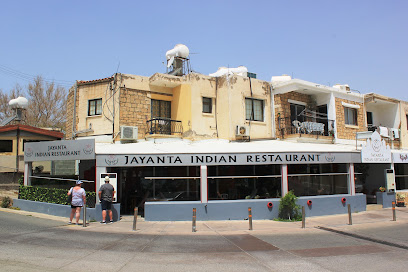
Mother's Restaurant
Discover authentic Greek cuisine at Mother's Restaurant in Paphos – where tradition meets flavor in a warm atmosphere.
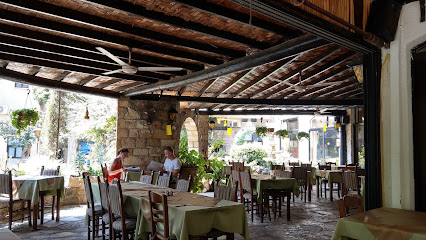
Markets, malls and hidden boutiques
Kings Avenue Mall
Explore Kings Avenue Mall in Paphos for an unforgettable shopping, dining, and entertainment experience amidst Cyprus's vibrant culture.

Papantoniou Supermarket Kato Paphos
Discover the flavors of Cyprus at Papantoniou Supermarket, your one-stop destination for fresh produce, local treats, and a vibrant shopping experience.
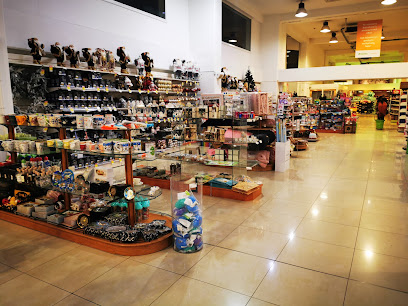
The Place
Explore 'The Place' in Paphos for unique gifts, local art, and a taste of Cypriot culture all in one vibrant destination.

Crystal Shop Cyprus
Discover unique gifts and aromatic treasures at Crystal Shop Cyprus, your destination for crystals, jewelry, and holistic supplies in Paphos.
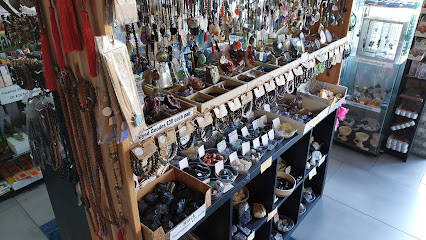
Dominate Shopping Centre
Explore Dominate Shopping Centre in Paphos for a unique blend of shopping, dining, and local culture in a vibrant atmosphere.

Aphrodite's Secret
Discover the rich flavors of Cyprus at Aphrodite's Secret, a delightful nut store in Paphos offering a wide selection of high-quality nuts and snacks.

LACOSTE Kings Avenue Mall Paphos
Explore the timeless elegance of LACOSTE at Kings Avenue Mall in Paphos, where style meets comfort for the discerning traveler.
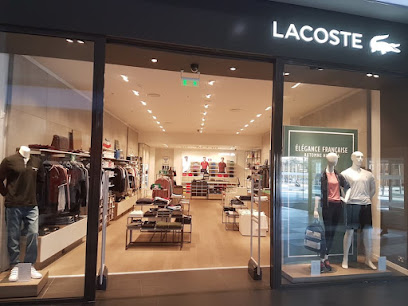
TOMMY HILFIGER Kings Avenue Mall Paphos
Explore stylish fashion and trendy apparel at TOMMY HILFIGER in Kings Avenue Mall, Paphos - a shopper's paradise in Cyprus!

Savvas Pottery (Paphos) Ltd
Discover the vibrant artistry and unique craftsmanship at Savvas Pottery, a cultural gem in Paphos, Cyprus, showcasing traditional pottery and artisan workshops.
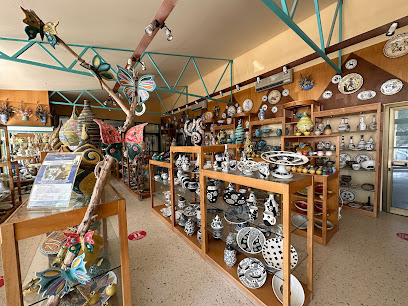
Spontas Souvenirs and Gifts
Explore Spontas Souvenirs and Gifts in Paphos for authentic Cyprus souvenirs, unique handicrafts, and delightful cosmetics, capturing the island's spirit.
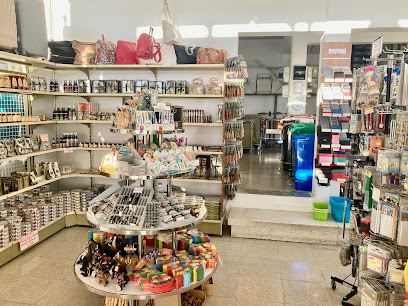
Wine & More by French Depot Paphos
Discover a delightful selection of wines, gourmet foods, and artisanal gifts at Wine & More by French Depot in Paphos, Cyprus.
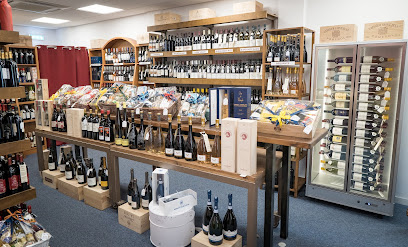
Neldi Art Gallery
Explore Neldi Art Gallery in Paphos, Cyprus – a treasure trove of unique handicrafts and wedding souvenirs showcasing local artistry and culture.

The Coffee Alchemist
Discover exceptional coffee and unique souvenirs at The Coffee Alchemist in Paphos, where local artistry meets delightful flavors.
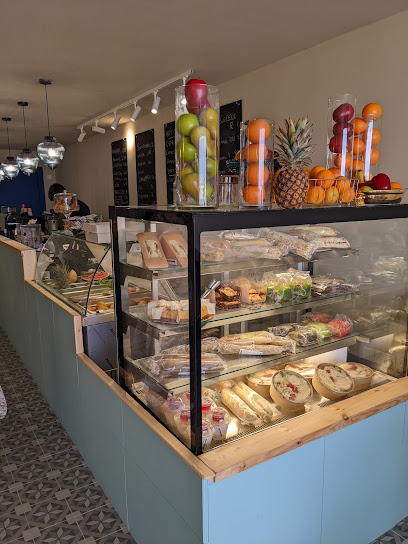
Brouska
Explore Brouska in Paphos, the ultimate destination for stylish women's clothing and a fantastic shopping experience.

The Euro Shop - Paphos
Explore unbeatable bargains at The Euro Shop in Paphos, where quality meets affordability in a delightful shopping experience.

Essential bars & hidden hideouts
Alea Allday Lifestyle
Experience the vibrant cocktail culture of Paphos at Alea Allday Lifestyle, where day meets night in a stylish and lively atmosphere.
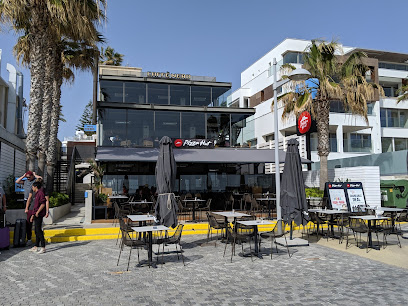
The Wooden Pub
Discover the charm of The Wooden Pub in Paphos, where unique beers and friendly service create the perfect pub experience.
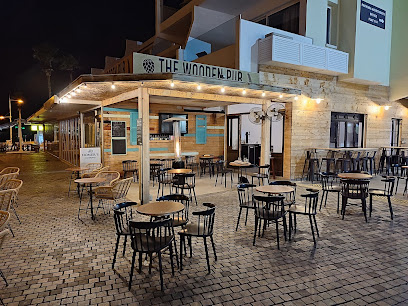
Friends Resto Bar
Discover the delightful ambiance and delicious flavors at Friends Resto Bar in Paphos, a perfect spot for dining and nightlife.
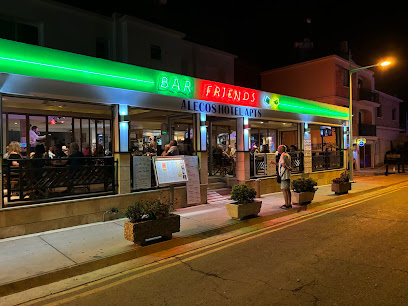
Pit Stop Pub
Discover the vibrant atmosphere of Pit Stop Pub in Paphos, where local culture meets delicious food and refreshing drinks.

Flintstones
Discover the vibrant nightlife of Paphos at Flintstones Bar, where friendly service and great drinks await in a lively atmosphere.
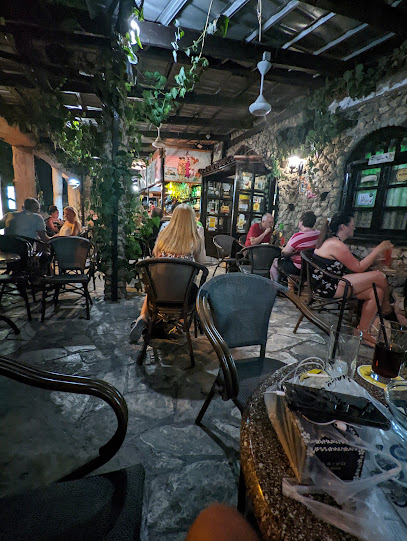
Why Not?
Experience the vibrant nightlife at Why Not? Bar in Paphos, where friendly vibes and refreshing drinks await every traveler.
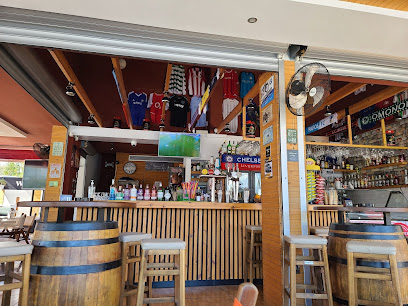
Keg and Barrel
Discover the charm of Keg and Barrel in Paphos—where local brews and vibrant social scenes blend seamlessly.
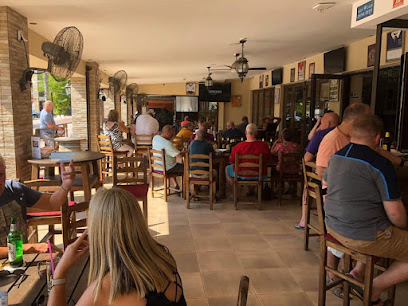
Baywatch
Experience the lively atmosphere and refreshing drinks at Baywatch, Paphos' premier bar for tourists seeking unforgettable nightlife.
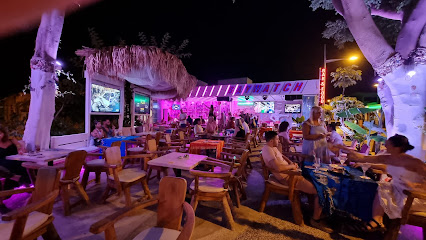
Ben's Bar
Discover the vibrant culinary scene at Ben's Bar, a charming grill venue in Paphos, Cyprus, offering delicious grilled dishes in a welcoming atmosphere.
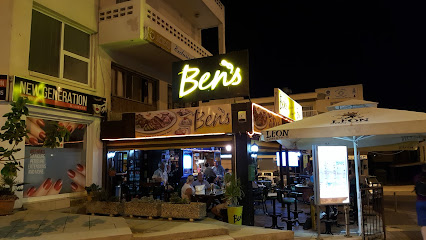
Alexanders Sports Bar
Join the excitement at Alexanders Sports Bar in Paphos, Cyprus—where sports, drinks, and good company come together for an unforgettable experience.
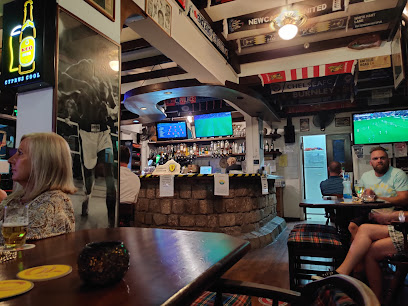
Different Bar
Discover Paphos' Different Bar: A lively gay bar offering great drinks, vibrant music, and an inclusive atmosphere for all.
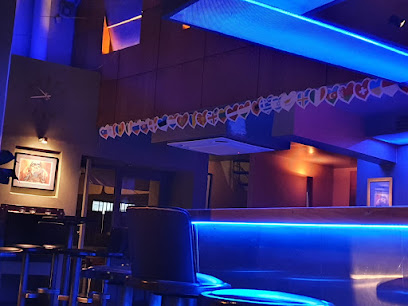
Memories Cocktail Bar
Experience the vibrant nightlife at Memories Cocktail Bar in Paphos, where expertly crafted cocktails and a welcoming atmosphere await every visitor.

The Bottle Bank Pub Cafe
Experience the lively nightlife at The Bottle Bank Pub Cafe in Paphos, where great drinks and friendly vibes await every visitor.
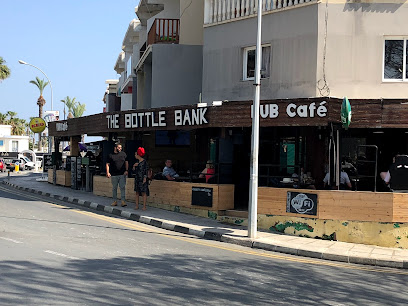
Buzz Bar
Buzz Bar: A lively cocktail bar in Paphos, Cyprus, perfect for socializing with expertly crafted drinks and a vibrant atmosphere.
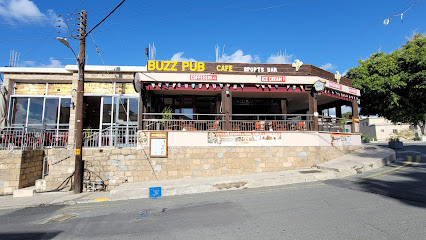
Aces Bar
Experience the thrill of sports at Aces Bar in Paphos, a premier destination for fans and food lovers alike with a vibrant atmosphere and great food.
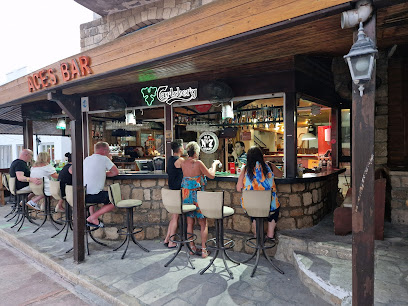
Local Phrases
-
- HelloΓεια σας
[Ya sas] - GoodbyeΑντίο
[An-dio] - YesΝαι
[Nai] - NoΌχι
[Ohi] - Please/You're welcomeΠαρακαλώ
[Para-ka-lo] - Thank youΕυχαριστώ
[Ef-ha-ris-to] - Excuse me/SorryΣυγγνώμη
[Sig-no-mi] - How are you?Πώς είσαι;
[Pos e-se;] - Fine. And you?Καλά. Εσύ;
[Ka-la. E-si;] - Do you speak English?Μιλάτε αγγλικά;
[Mi-la-te an-gli-ka;] - I don't understandΔεν καταλαβαίνω
[Den ka-ta-la-ve-no]
- HelloΓεια σας
-
- I'd like to see the menu, pleaseΘα ήθελα να δω το μενού, παρακαλώ
[Tha i-the-la na do to me-noo, para-ka-lo] - I don't eat meatΔεν τρώω κρέας
[Den tro-o kre-as] - Cheers!ΥΓΕΙΑ!
[Yi-ia!] - I would like to pay, pleaseΘα ήθελα να πληρώσω, παρακαλώ
[Tha i-the-la na pli-ro-so, para-ka-lo]
- I'd like to see the menu, pleaseΘα ήθελα να δω το μενού, παρακαλώ
-
- Help!Βοήθεια!
[Vo-i-thi-a!] - Go away!Φύγε!
[Fi-ge!] - Call the Police!Καλέστε την Αστυνομία!
[Ka-le-ste tin As-ti-no-mi-a!] - Call a doctor!Καλέστε γιατρό!
[Ka-le-ste ya-tro!] - I'm lostΈχω χαθεί
[E-ho xa-thi] - I'm illΕίμαι άρρωστος
[E-mi a-ro-stos]
- Help!Βοήθεια!
-
- I'd like to buy...Θα ήθελα να αγοράσω...
[Tha i-the-la na a-gho-ra-so...] - I'm just lookingΑπλά κοιτάω
[A-pla ki-ta-o] - How much is it?Πόσο κοστίζει;
[Po-so kos-ti-zi;] - That's too expensiveΑυτό είναι πολύ ακριβό
[Af-to e-ne po-li ak-ri-vo] - Can you lower the price?Μπορείτε να χαμηλώσετε την τιμή;
[Bo-ri-te na xa-mi-lo-se-te tin ti-mi;]
- I'd like to buy...Θα ήθελα να αγοράσω...
-
- What time is it?Τι ώρα είναι;
[Ti o-ra e-ne;] - It's one o'clockΕίναι μία ώρα
[E-ne mia o-ra] - Half past (10)Μισή (10)
[Mi-si (10)] - MorningΠρωί
[Pro-i] - AfternoonΑπόγευμα
[A-po-gef-ma] - EveningΒράδυ
[Vra-di] - YesterdayΧθες
[Hthes] - TodayΣήμερα
[Si-me-ra] - TomorrowΑύριο
[Av-rio] - 1Ένα
[E-na] - 2Δύο
[Thi-o] - 3Τρία
[Tria] - 4Τέσσερα
[Tes-se-ra] - 5Πέντε
[Pen-de] - 6Έξι
[E-xi] - 7Επτά
[Ep-ta] - 8Οκτώ
[Ok-to] - 9Εννιά
[En-nia] - 10Δέκα
[Thi-ka]
- What time is it?Τι ώρα είναι;
-
- Where's a/the...?Πού είναι ένα/το...;
[Pou e-ne e-na/to...;] - What's the address?Ποια είναι η διεύθυνση;
[Pia e-ne i di-ef-thin-si;] - Can you show me (on the map)?Μπορείτε να μου δείξετε (στο χάρτη);
[Bo-ri-te na mu di-xe-te (sto har-ti);] - When's the next (bus)?Πότε είναι το επόμενο (λεωφορείο);
[Po-te e-ne to e-po-me-no (le-o-fo-re-o);] - A ticket (to ....)Ένα εισιτήριο (για το ....)
[E-na e-si-ti-rio (ya to ....)]
- Where's a/the...?Πού είναι ένα/το...;
History of Kato Paphos
-
Paphos, known as Kato Paphos in its lower part, traces its origins back to the Neolithic period. According to legend, Paphos was founded by Pygmalion, the mythical king of Cyprus, and named after his daughter, Paphos. The city later developed under the influence of the Mycenaean Greeks during the 12th century BC, who brought with them their culture and traditions.
-
Kato Paphos is intrinsically linked to the worship of Aphrodite, the Greek goddess of love and beauty. According to mythology, Aphrodite was born from the sea foam near Paphos, and the city became a major center for her cult. The Sanctuary of Aphrodite, located in nearby Kouklia, was one of the most important religious sites in the ancient world, attracting pilgrims from across the Mediterranean.
-
During the Hellenistic period, Paphos became the capital of Cyprus under the Ptolemaic Kingdom of Egypt. This era saw significant urban development, including the construction of impressive public buildings and infrastructure. The city continued to flourish under Roman rule, becoming a major administrative center. Notable Roman-era landmarks include the House of Dionysos and the House of Theseus, renowned for their intricate mosaics.
-
Kato Paphos played a crucial role in the spread of Christianity. Saint Paul is said to have visited the city around 45 AD, converting the Roman proconsul Sergius Paulus to Christianity. The city boasts several early Christian basilicas, such as the Panagia Chrysopolitissa Basilica, which was built in the 4th century. During the Byzantine period, Paphos remained an important religious and cultural hub.
-
Following the Byzantine era, Paphos fell under the control of the Crusaders, the Lusignans, and later the Venetians. The medieval period saw the construction of fortifications and castles, such as the Paphos Castle, which still stands today. In 1570, the city was captured by the Ottoman Empire, marking the beginning of a new era. Under Ottoman rule, Paphos experienced a decline in its strategic and economic importance.
-
In 1878, Cyprus came under British administration, leading to significant infrastructural and administrative changes. Paphos was modernized with new roads, schools, and public buildings. Following Cyprus’s independence in 1960, Kato Paphos transformed into a popular tourist destination, celebrated for its rich historical heritage and archaeological sites. The city was designated a UNESCO World Heritage Site in 1980, recognizing its cultural and historical significance.
Kato Paphos Essentials
-
Kato Paphos is located on the southwestern coast of Cyprus. The nearest airport is Paphos International Airport, just about 15 kilometers away. Many international flights, especially from Europe, land here. From the airport, you can take a taxi or a shuttle bus to reach Kato Paphos. Alternatively, you can fly into Larnaca International Airport, which is around 130 kilometers away, and then take a bus or rent a car for the drive to Kato Paphos.
-
Kato Paphos is well-connected with an efficient public transport system. The local bus service is reliable and covers most tourist attractions and neighboring areas. Taxis are also readily available and can be hailed on the street or booked in advance. Renting a car is another convenient option, giving you the freedom to explore the surrounding countryside at your own pace. Bicycles and scooters can be rented for short trips within the town.
-
The official currency in Cyprus is the Euro (EUR). Credit and debit cards are widely accepted in hotels, restaurants, and shops. ATMs are plentiful, and currency exchange services are available at banks and exchange bureaus. It's advisable to carry some cash for small purchases or in case you visit more remote areas where card payments may not be accepted.
-
Kato Paphos is generally a safe destination for tourists. However, like any popular tourist spot, petty crimes such as pickpocketing can occur. Be cautious with your belongings, especially in crowded areas like the harbor and markets. Avoid poorly lit areas at night and always use registered taxis. There are no specific high-crime areas targeting tourists, but it's always best to stay vigilant.
-
In case of an emergency, dial 112 for immediate assistance. This number connects you to police, fire, and medical services. The General Hospital of Paphos is well-equipped to handle medical emergencies. Pharmacies are widely available and can provide over-the-counter medications. It is also advisable to have travel insurance that covers medical emergencies.
-
Fashion: Do dress modestly, especially when visiting religious sites. Avoid overly revealing clothing. Religion: Do respect local customs and traditions. Always cover your head and shoulders when entering churches and monasteries. Public Transport: Do be courteous and offer your seat to elderly or disabled passengers. Don’t eat or drink while on public transport. Greetings: Do greet people with a friendly 'Kalimera' (good morning) or 'Kalispera' (good evening). A handshake is also appropriate. Eating & Drinking: Do try local dishes and wines. Don’t refuse food or drink offerings from locals, as it may be considered impolite.
-
To experience Kato Paphos like a local, visit the local markets for fresh produce and traditional Cypriot goods. Engage with locals as they are friendly and often willing to share stories about their town. Don’t miss the archaeological sites like the Paphos Archaeological Park and the Tombs of the Kings. For a unique experience, take a leisurely stroll along the harbor, enjoying the local seafood at one of the many seaside tavernas.
Trending Landmark in Kato Paphos
-
Archaeological Site of Nea Paphos
-
Archaeological Site of the Tombs of the Kings
-
Paphos Castle
-
Paphos Mosaics
-
House of Dionysus
-
Agia Solomoni Catacomb
-
Lighthouse
-
St Paul's Church and archeological site
-
Catacombs
-
Paphos Promenade
-
Roman Odeon
-
Church of Panagia Theoskepasti
-
Kato Paphos - Ta Mpania
-
Kato Pafos Archaeological Park
-
Forty Columns Fortress
Nearby Cities to Kato Paphos
-
Things To Do in Paphos
-
Things To Do in Pissouri
-
Things To Do in Polis Chrysochous
-
Things To Do in Troodos
-
Things To Do in Limassol
-
Things To Do in Kyrenia
-
Things To Do in Nicosia
-
Things To Do in Larnaca
-
Things To Do in Famagusta
-
Things To Do in Ayia Napa
-
Things To Do in Protaras
-
Things To Do in Alanya
-
Things To Do in Antalya
-
Things To Do in Beirut
-
Things To Do in Batroun











